Seoul Botanic Park & Gardens
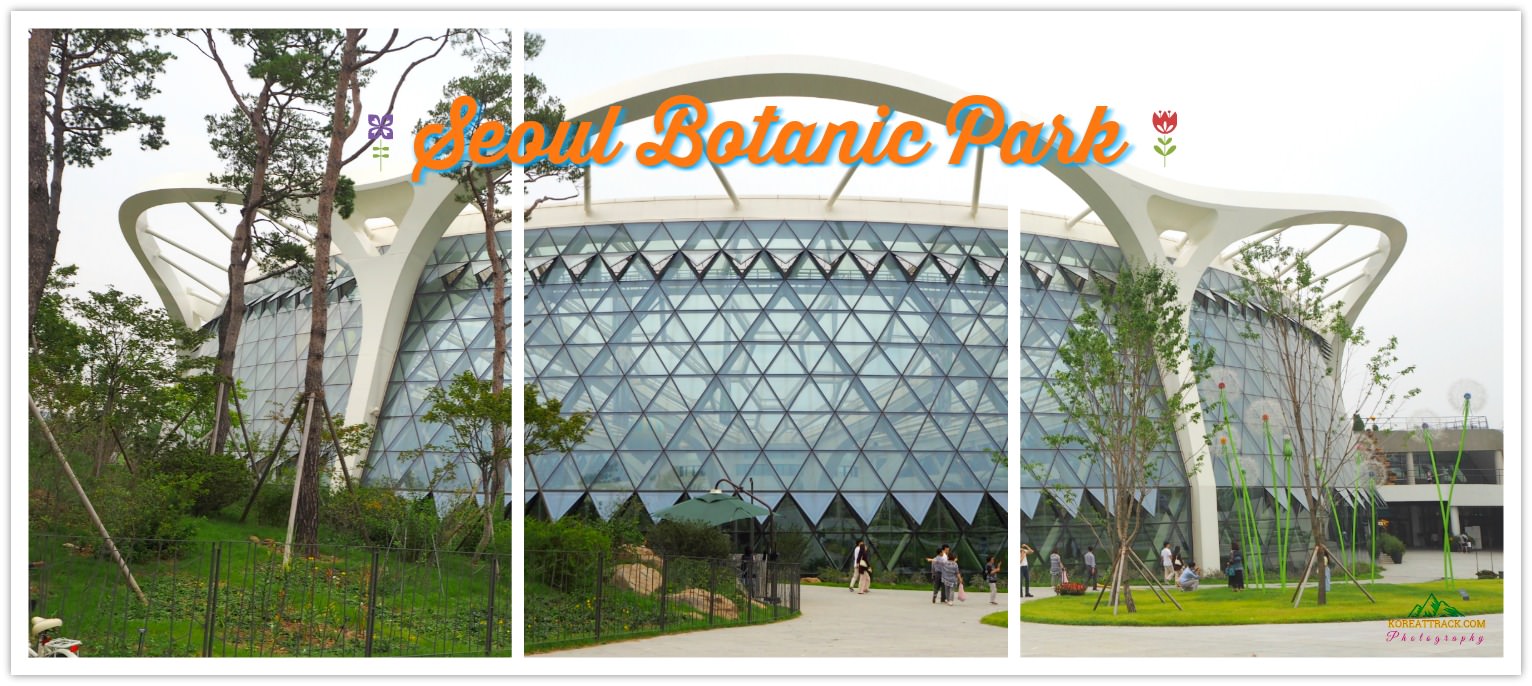 A collage of Seoul Botanic Park and Garden's entrance area
A collage of Seoul Botanic Park and Garden's entrance areaseoul botanic park in magoknaru
Seoul Botanic Park is Seoul's first botanical park and garden with this size. This newly-opened (on May 2019) botanical park has a collection of over 3 thousand plant species from around the world.
The Park has greenhouse zones (tropical and Mediterranean zones) that especially showcase plant species not found or endemic in Korea.
It is a beautiful and relaxing place to be. Entrance fee will be collected for a very reasonable amount (adult: 5000 Won, teen: 3000 Won, child: 2000 Won).
Most of all, you can quickly get there via subway (Magoknaru Station, Exit 3) or take any transport you prefer.
Now, let me describe a bit about its features so that you will have some ideas on what to expect.
 Entrance area of the botanical greenhouse
Entrance area of the botanical greenhouse Tropical Plants Zone (taken from the Skywalk)
Tropical Plants Zone (taken from the Skywalk)Seoul Botanic Park Features
The botanic park is divided into various zones or sections. The zones include the four...
- Forest Field
- Botanic Garden
- Lake Garden
- Marsh Park
The whole area settles on over 500,000 square meters in total area.
Currently, there are over 3,000 plant species accessible for viewing. The authorities planned to increase the numbers into around 8,000 species in the future.
The expansion of plant collection will be actively promoted through an institutional exchange, research, and propagation of plant species.
The botanic park is aimed to become South Korea's representative city botanical garden.
Amazon Lily & Rare Plants
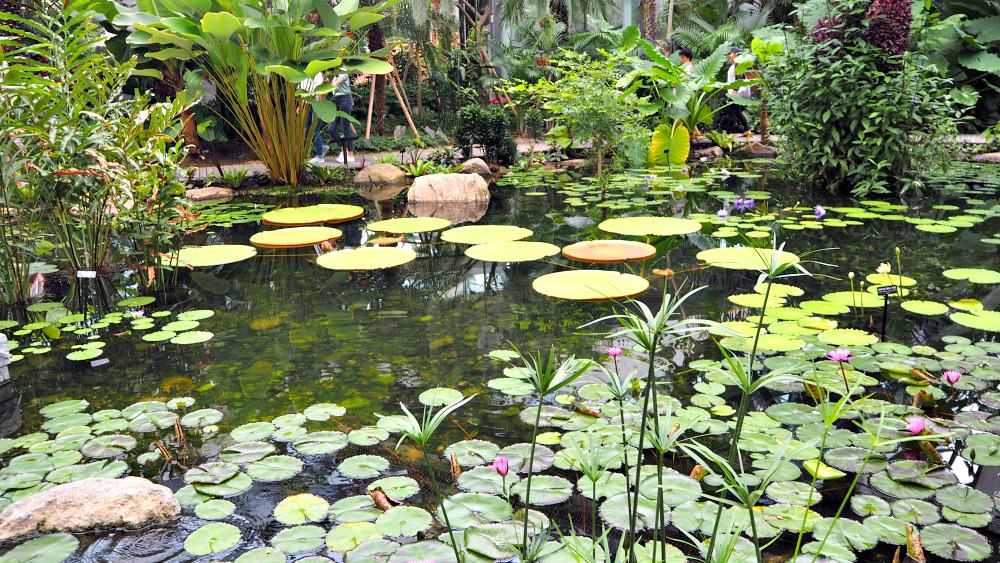 Victoria Lily and lotus flowers
Victoria Lily and lotus flowersSeoul Botanic Park will feature an Amazonian plant in its greenhouse called Victoria Lily. Victoria Lily was first found in the Amazon River in Brazil, of course.
An Australian wild tree that grows only in Queensland, along with an Olive tree from Spain, among other rare plants are being featured here.
South Korea features such endemic plants in line with the exhibitions of plant species that are also accessible in twelve cities around the world.
Viewing Time & Access
Seoul Botanic Park is somewhat a fusion of both botanical garden and park concepts.
The four spaces (Forest Field, Botanic Garden, Lake Garden, Marsh Park) are open for viewing from 9:30 AM to 6 PM.
On the other hand, the park areas (Forest Field, Lake garden, Marsh Park) are accessible 24 hours all-year-round for free.
The Park is closed on Mondays.
Entrance Fees
Adults (19-65 years old): 5,000 Won
Teens (13-18 years old): 3,000 Won
Children (6-12 yrs. old): 2,000 Won
For more information, you may check out the following website...
Seoul Botanic Park website: botanicpark.seoul.go.kr
Guide map of Seoul Botanic Park
First Floor Facilities
 Inside of Seed Library
Inside of Seed LibraryI got very excited when I first set my foot at the entrance area of Botanic Center, knowing that I could find loads of things. They really made my day!
Let me describe the features of the facilities with some details...
In the 1st Floor, you will find the following facilities:
- Washrooms, Seed Library, Project Hall 1, Gift Shop, Cafe, Nursing Room, Kids Cafe, Elevator, Library, Cafeteria, Locker.
 Cafe inside the Botanic Park's building
Cafe inside the Botanic Park's building Gift and souvenir shop inside the Botanic Park's building
Gift and souvenir shop inside the Botanic Park's buildingSince you know what those facilities are for, however, let me describe some of them a bit for further information.
Seed Library
I was inquisitive about, and so I headed to this place and investigated aside from taking photos. It was interesting to learn about what this "library seed" really is trying to say or do.
First, the library actually resembles a book library in the sense that they let you borrow seeds and reproduce them. Of course, you have the responsibility to return the seeds from your harvest later on! That's right!
The pamphlet says it has around 500 species of seed on display. Pick your seed if you are confident on propagating them and then return some after your harvest. Fascinating idea! It is closed on Mondays, FYI!
 Photos of seeds and collections of seeds inside Seed Library
Photos of seeds and collections of seeds inside Seed LibraryGift Shop (Souvenir Shop)
It's a beautiful place, I think. You can purchase some 'green' gifts here for personal or as a gift for anyone.
The shop sells house plants, seeds, handmade bags, house decors, handkerchief, bandana, among others.
 Seoul Botanic Garden's souvenir shop is selling all sorts of products such as books, recyclable bags, and plants
Seoul Botanic Garden's souvenir shop is selling all sorts of products such as books, recyclable bags, and plantsSecond Floor Facilities
On this Floor, you can find facilities mostly for educational purposes and related to plants. In here, you can explore the Botanic Hall, Project Hall 2, Lecture Rooms, Library, washrooms, and the elevator.
Library
It has over 10 thousand books, periodicals, videos and other materials about local and foreign plants. You can read anything about plants' ecology, learn about landscaping, and more plant-related topics or subjects.
The library is open from 9:30 AM up to 6 PM. It is closed on Mondays and national holidays.
Fourth Floor Facilities
There are three public facilities available here: food court, cafeteria, and kids cafe. Washrooms, elevators, and handicapped facilities are accessible as well.
Note that it is open from...
- Tuesday to Friday from 10:30 AM to 5 PM,
- Saturday to Sunday at 9:30 AM to 7 PM
The Tropical & Mediterranean Zones
 Seoul Botanic Park Mediterranean Zone
Seoul Botanic Park Mediterranean Zone Seoul Botanic Park Tropical and Mediterranean Zones
Seoul Botanic Park Tropical and Mediterranean ZonesSeoul Botanic Garden is divided into two zones, as aforementioned. Since you are reading this, I presume that you want to get some exciting ideas or what to expect. But I won't give more so as not to spoil you as a spoiler does!
tropical plants
Below, I will only describe some plants which I found interesting or the ones that I am missing! Here we go...
Mango Tree, Coffee Tree, Palmera, Ferns, etc.
Although I have seen most of these plants, please let me show you the photos I took the most exciting plants I enjoyed at this Park.
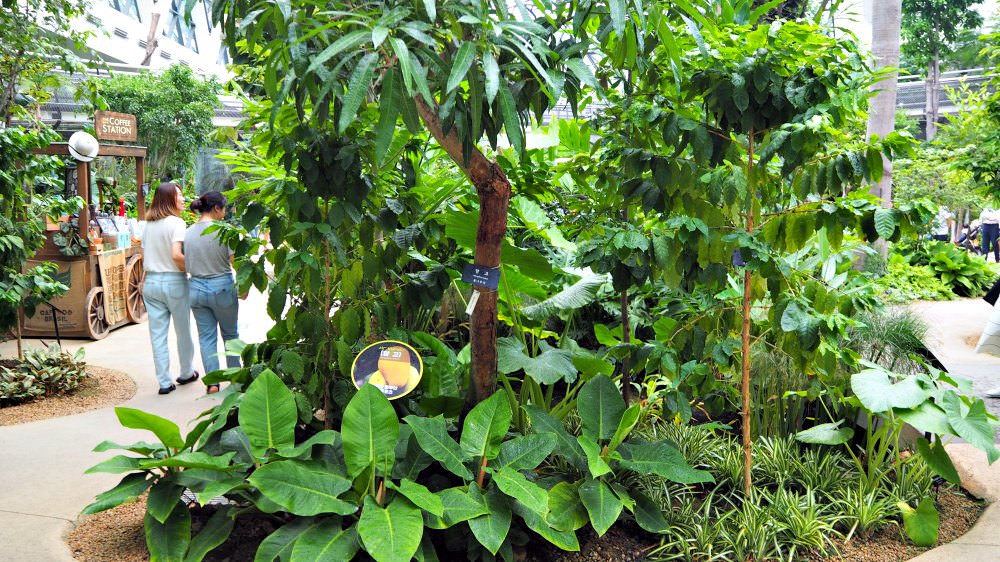 A Mango (Left) and Coffee Trees (Right) inside the Tropical Zone of Seoul Botanical Park
A Mango (Left) and Coffee Trees (Right) inside the Tropical Zone of Seoul Botanical Park Seoul Botanic Park and Gardens - Pot Plants
Seoul Botanic Park and Gardens - Pot PlantsYou will find that specific country where the sample species came from are named, such as Indonesia, Vietnam, Colombia, and Brazil.
Bodhi Tree
This tree is known to have a long lifespan and can be found in many tropical countries, such as Asian countries. It is the tree where the legend says Buddha gained enlightenment while meditating.
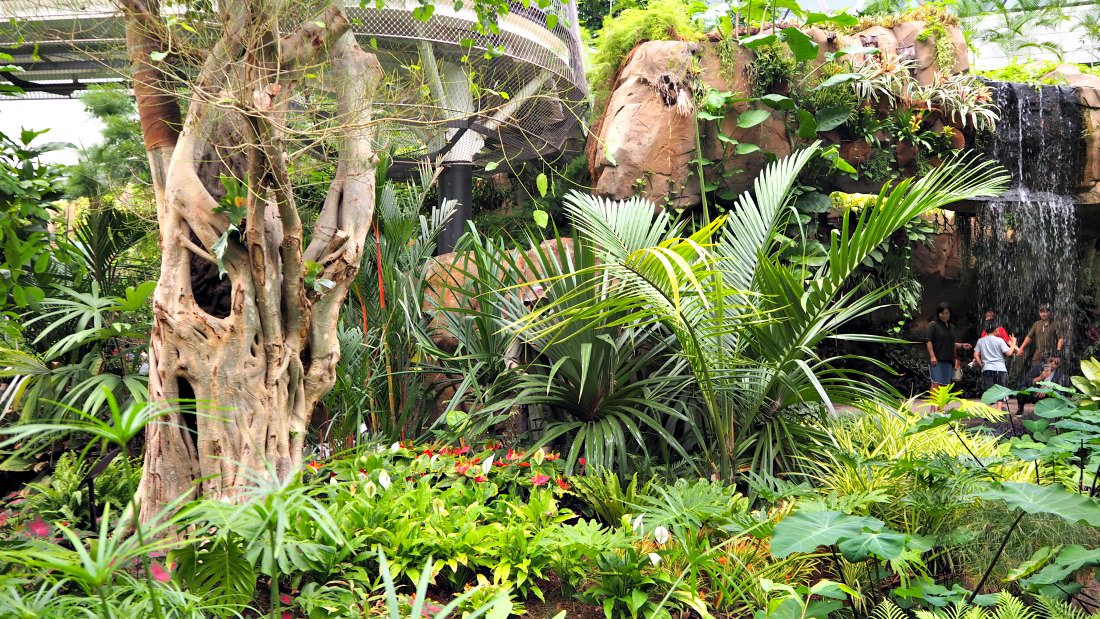 Bodhi Tree at the park's Tropical Zone
Bodhi Tree at the park's Tropical ZoneVictoria Water Lily
It is considered the giant water lily on Earth. This lily species was believed to be first discovered in the Amazon River. Its name took after Queen Victoria of England.
 Victoria Lily and common lilies inside the Tropical Zone
Victoria Lily and common lilies inside the Tropical ZoneKNOW THIS: Victoria Lily's leaf can grow or expand up to 3 meters in diameter. Its flower(s) only opens at night time (colored white on the first night and pink on the second night).
Cannonball Tree
This tree blooms fragrant flowers, but its fruits smell very stinky. It can grow up more than 30 meters tall. Its fruits look like clusters of cannonballs.
Coconut Trees
As you can see in the photo, the coconuts have just started to come out from each coconut shell. It will take at least three years to see the 'real' trunk of the coconut tree(s).
Giant Taro
It is a tree that has elephant-ear-like leaves. It is a herbal plant with large leaves. It grows up to 3 meters tall only.
More plants below...
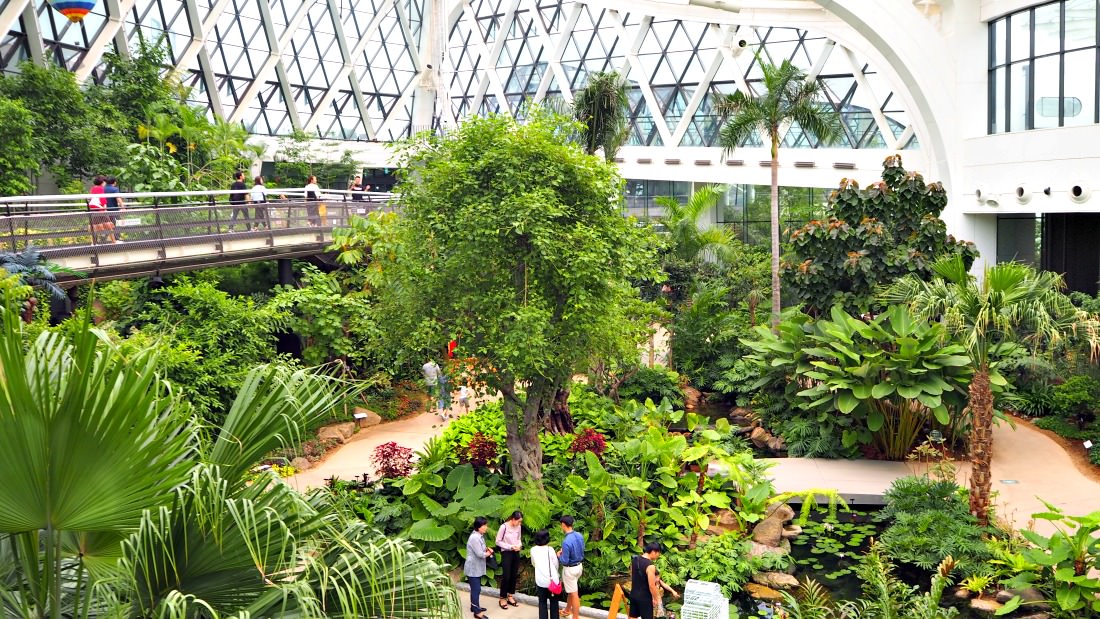 Tropical plants
Tropical plants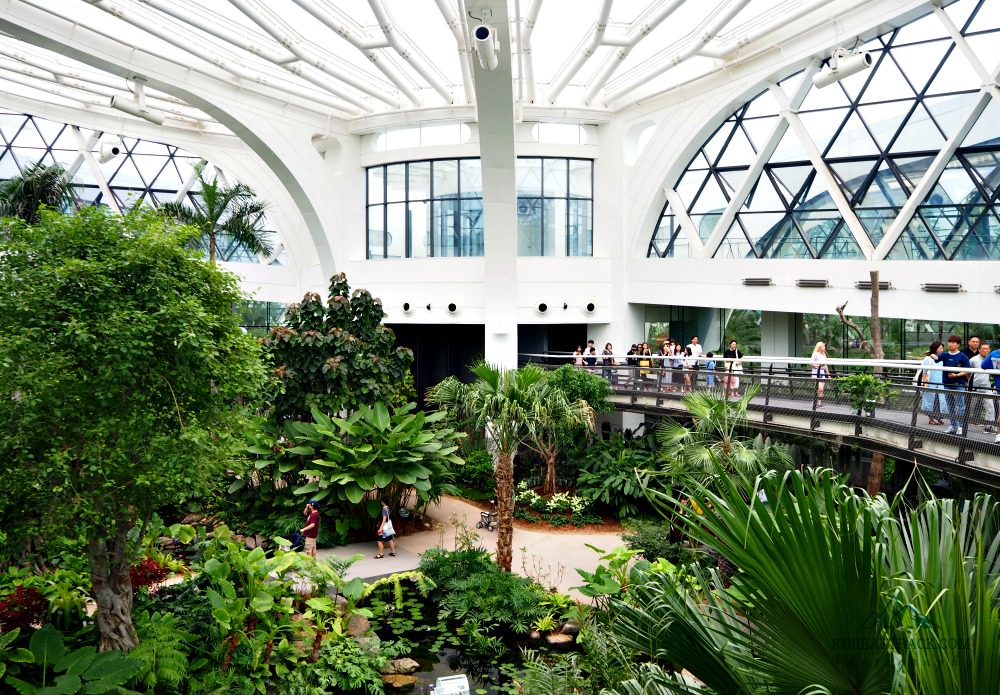 Tropical plants inside the Tropical Plants Zone
Tropical plants inside the Tropical Plants Zone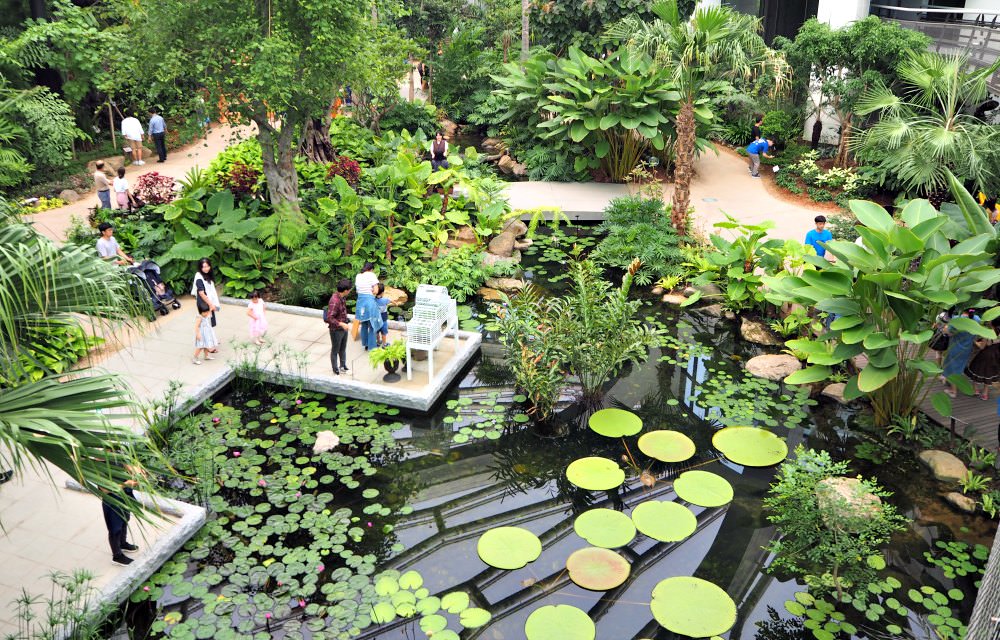 Prominent Victoria Lily in the Tropical Zone
Prominent Victoria Lily in the Tropical Zone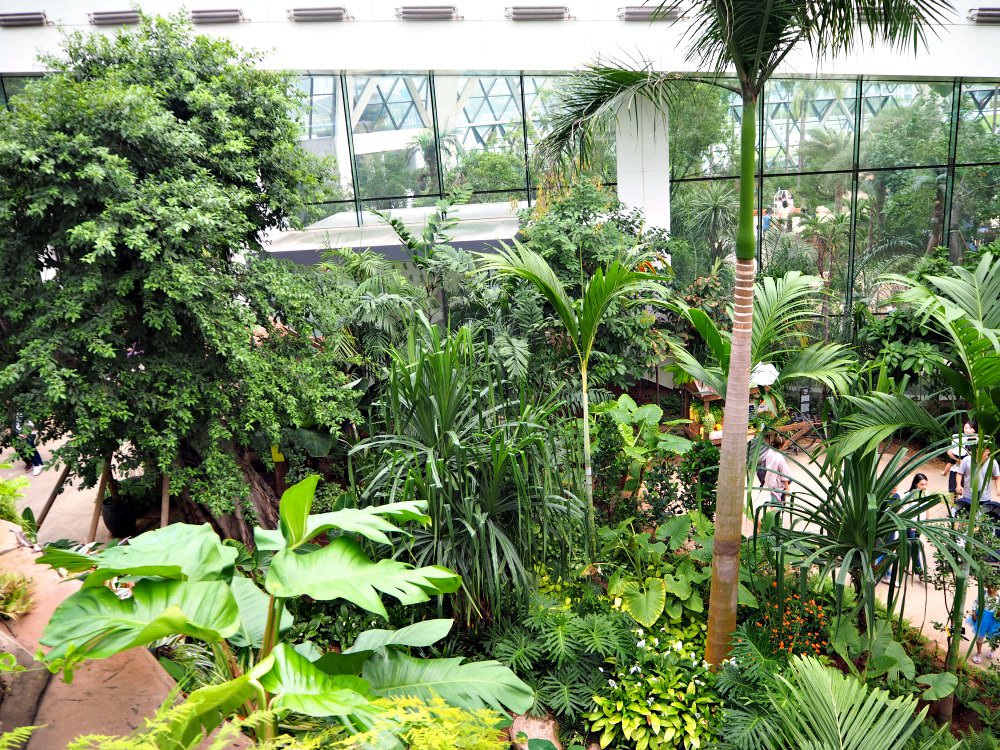 Tropical plants living in this 'tropical' greenhouse of Seoul Botanic Park
Tropical plants living in this 'tropical' greenhouse of Seoul Botanic ParkNow, let me introduce to you some of the amazing Mediterranean plants found inside Seoul Botanic Park's greenhouse.
mediterranean plants
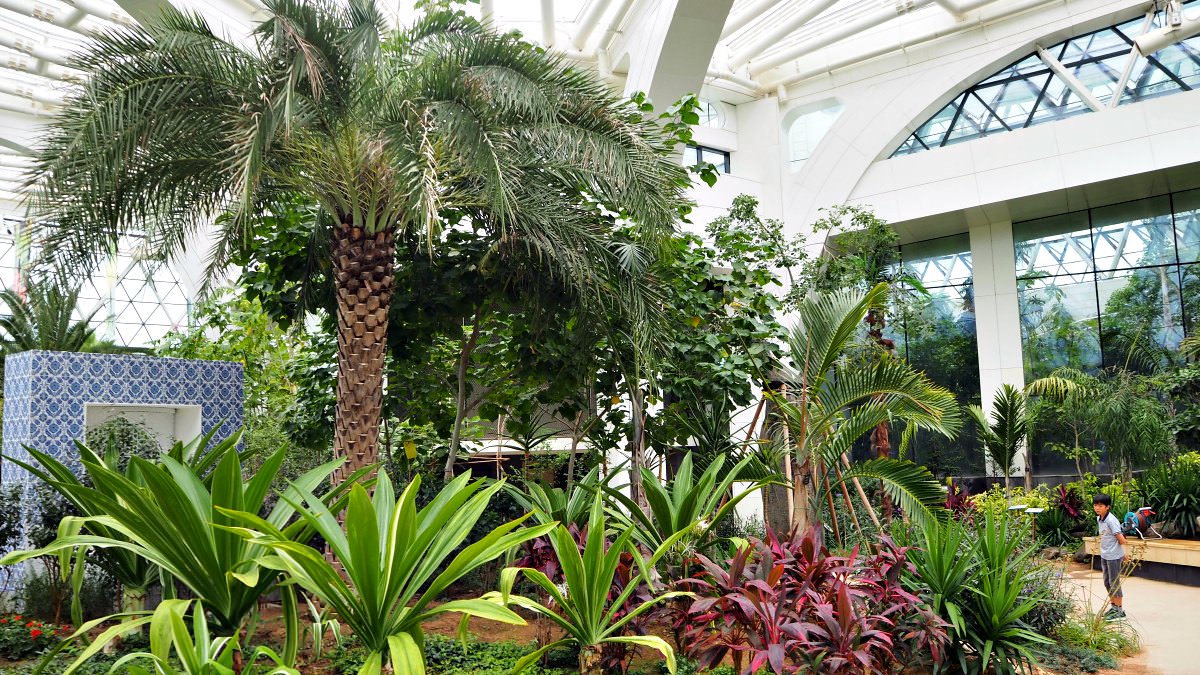 Mediterranean Zone and plants
Mediterranean Zone and plantsAlthough the space here cannot be compared to the more open and vast areas in the Mediterranean world, I found it somewhat homey!
You will see that Mediterranean space has more bare ground compared to the covered ground of the tropical world (generally speaking).
The sight of the tall palm trees and other representative tall trees are not only amazing but relaxing to watch.
This zone mentions that names of the countries where the plants came from including Spain, California (USA), Italy, Greece, Australia, Turkey, South Africa, and Uzbekistan.
Okay, yes, let me enumerate some of the plants I love about this zone.
Baobab Trees
This is one of the trees I want to see in real life. But please, don't get disappointed because these trees (I think 3 of them) are still a few years old. However, I was just happy to see them in Korea!
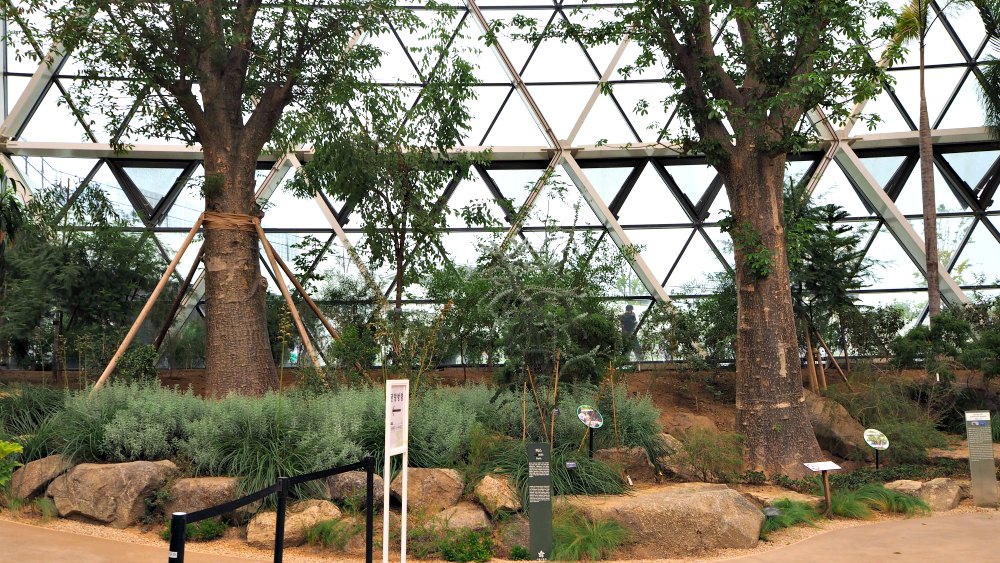 Young Baobab Trees, or the "upside-down trees" inside the Park
Young Baobab Trees, or the "upside-down trees" inside the ParkGOOD TO KNOW: One fully mature Baobab Tree can store up to 3 tons of water inside it. Whenever drought strikes, African people draw out water from its trunk. Thus they call it the "Tree of Life."
Huge Cactus
They always fascinate me not because of their thorns but because of their shapes. And they look elegant and discipline! I love their colorful and attractive flowers by the way!
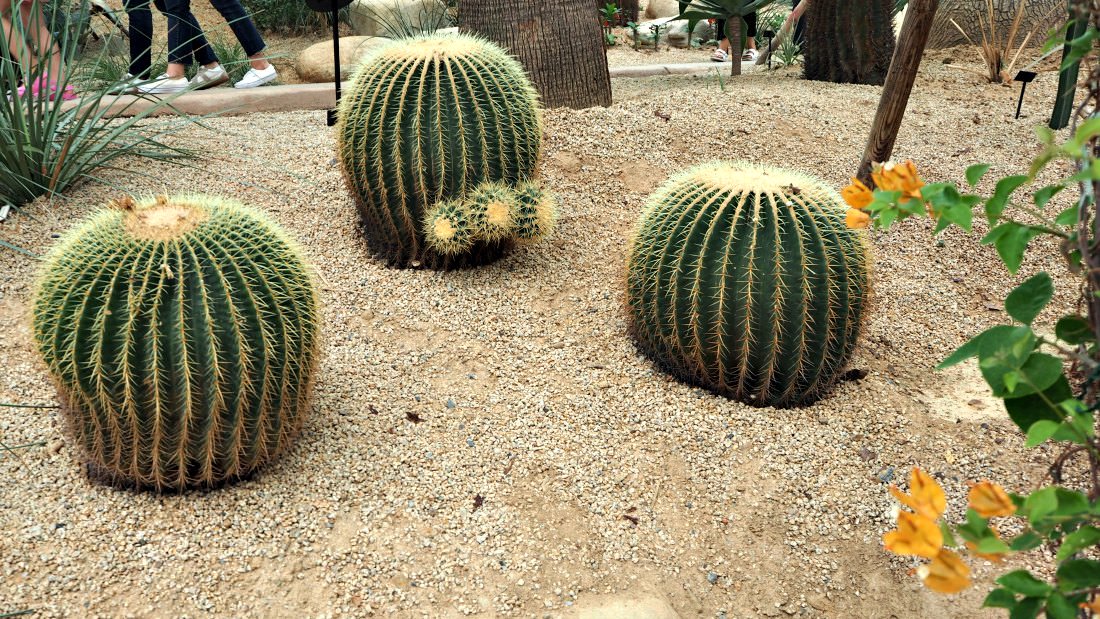 Three giant cactii inside the Mediterranean Zone
Three giant cactii inside the Mediterranean ZoneOlive Trees
Yes, I have finally seen them here. But then again, please don't be disappointed as they only trunks but started to spread their branches. Still, they look nice, and their fruits would be tasty (and olive oil lovely!).
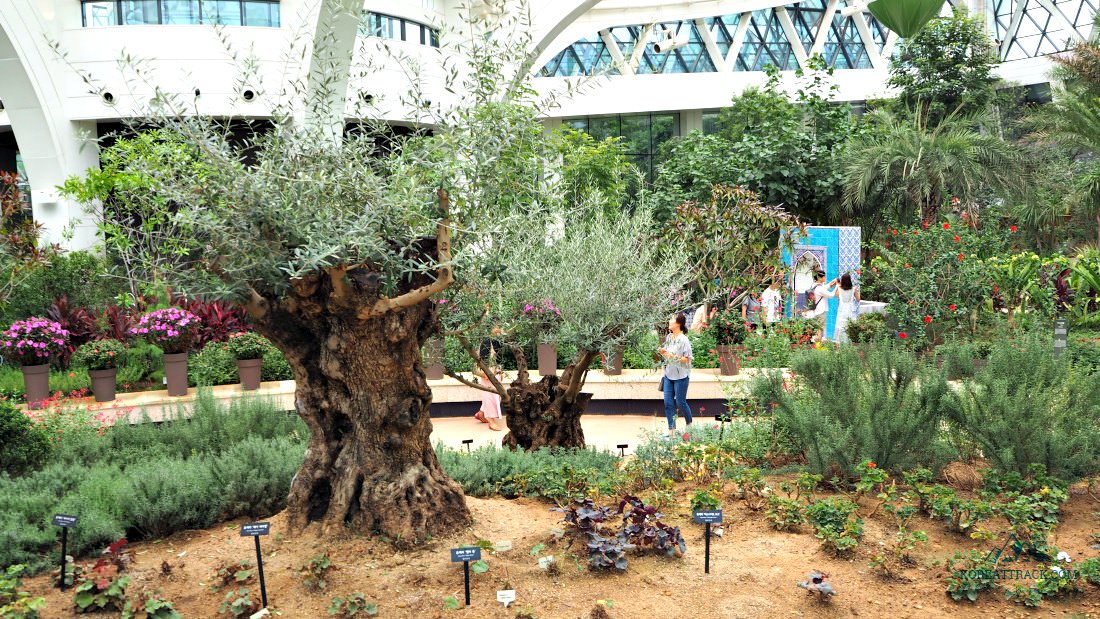 Cut Olive Trees at the Mediterranean Zone inside the botanical park's greenhouse building
Cut Olive Trees at the Mediterranean Zone inside the botanical park's greenhouse buildingDragon Tree
This tree is somewhat fully grown but trimmed (for smooth movement, I think). Since this greenhouse is like a Mediterranean environment, it will show off its out-of-this-world branches and leaves in the future.
Date Palm
This palm tree species looks very elegant and imposing to me. Probably, that's the reason why they are usually found in some prominent people's gardens.
As much as I like their towering sights, I love most their dark but sweet dried fruits!
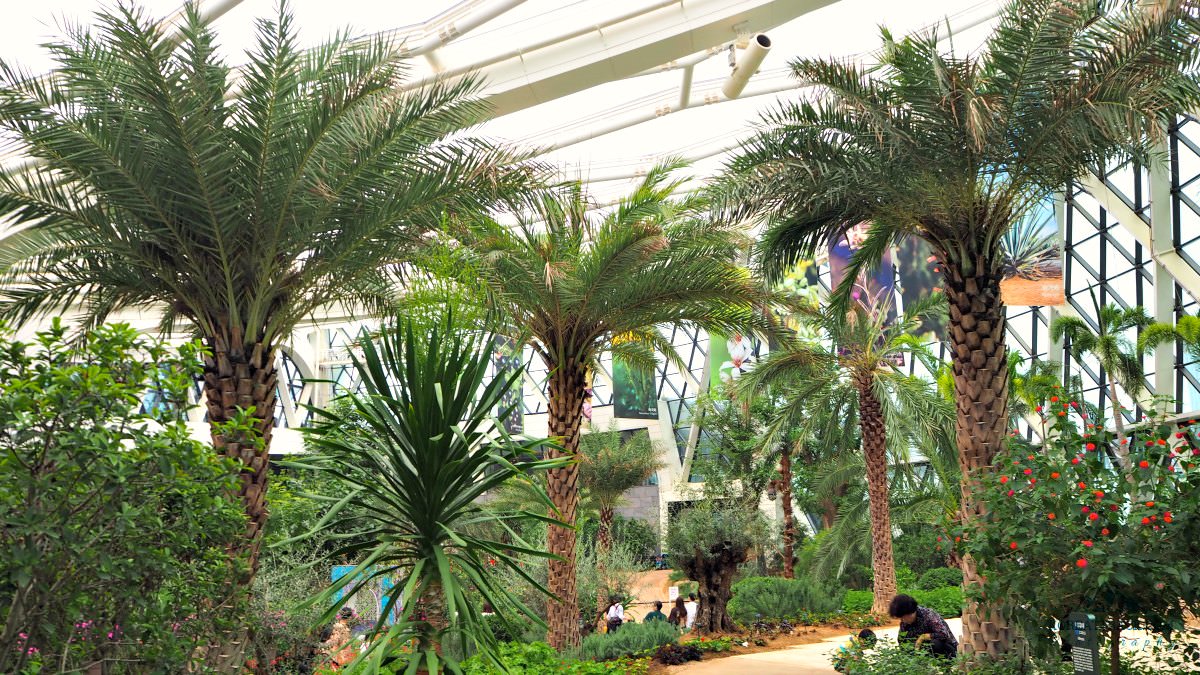 Date Palms at the Mediterranean Zone
Date Palms at the Mediterranean ZoneBottle Tree (Ceiba Chodatii)
The shape and size of this tree is fascinating to me. This tree came from Australia, a country that is home to over 700 eucalyptus species. Bottle Tree is also a native to Australia and grows mostly in Queensland.
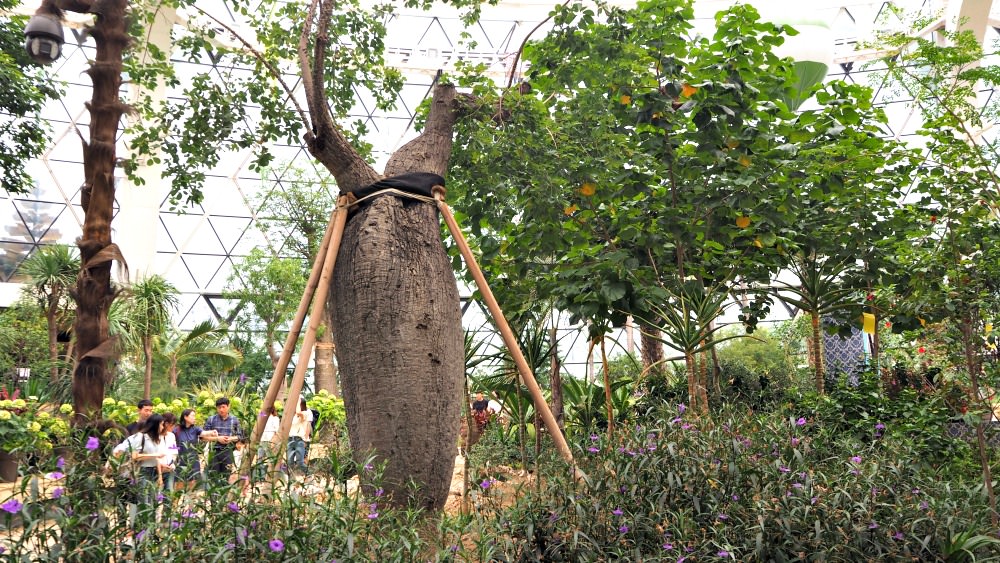 Ceiba Chodatii plant inside the greenhouse
Ceiba Chodatii plant inside the greenhouseAnd more plants and favorite photos I took...
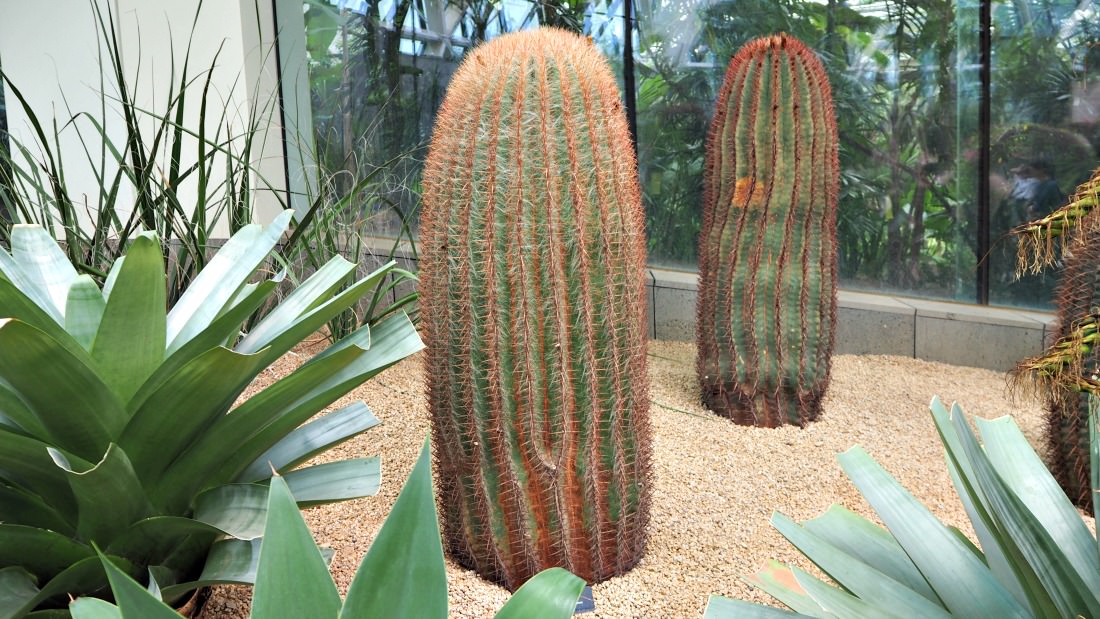 Cactii and Agaves at Seoul Botanic Park
Cactii and Agaves at Seoul Botanic Park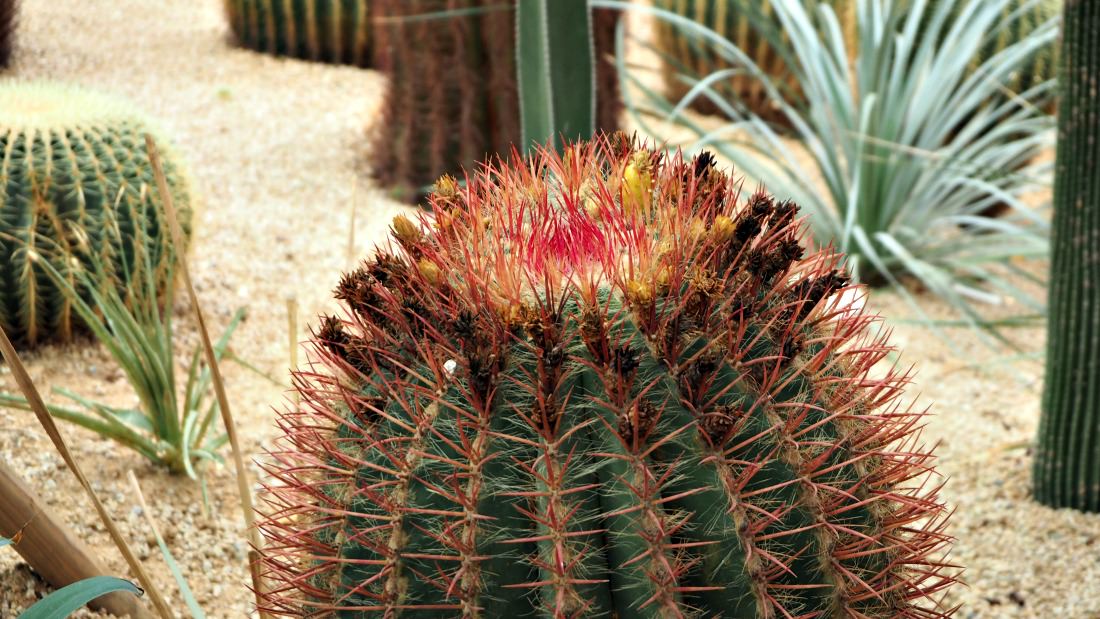 This cactus starts to show-off its colorful flowers
This cactus starts to show-off its colorful flowersSeoul Botanic Gardens
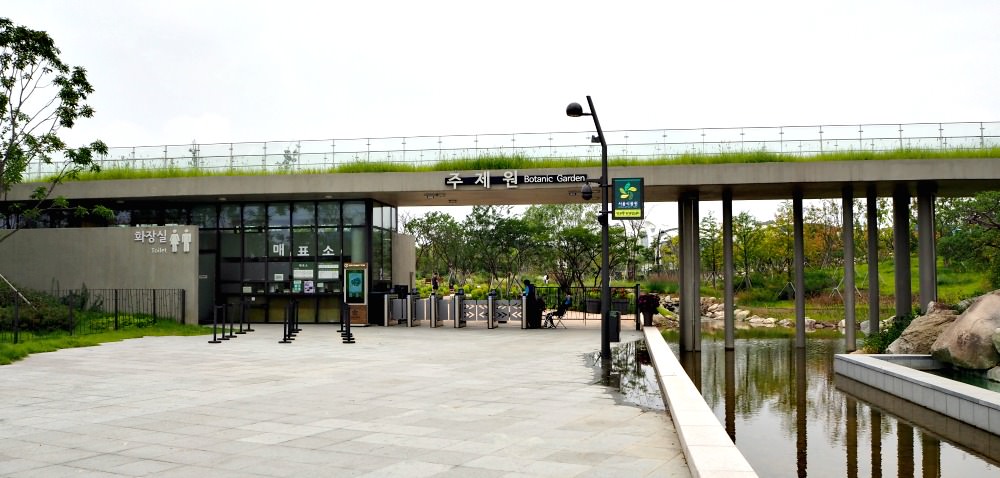 Ticketing and entrance to the Botanic Gardens
Ticketing and entrance to the Botanic GardensThe botanic gardens are quite interesting because of their number. These gardens are categorized according to the central theme or purpose of each garden.
You can find...
Windy Garden, Memory Garden, Seasonal Garden, Meditative Garden, Welcome Garden, Healing Garden, Gardener's Garden, and Rock Garden
The Rock Garden represents the traditional Korean forest with indigenous plants that are not usually seen by Koreans themselves.
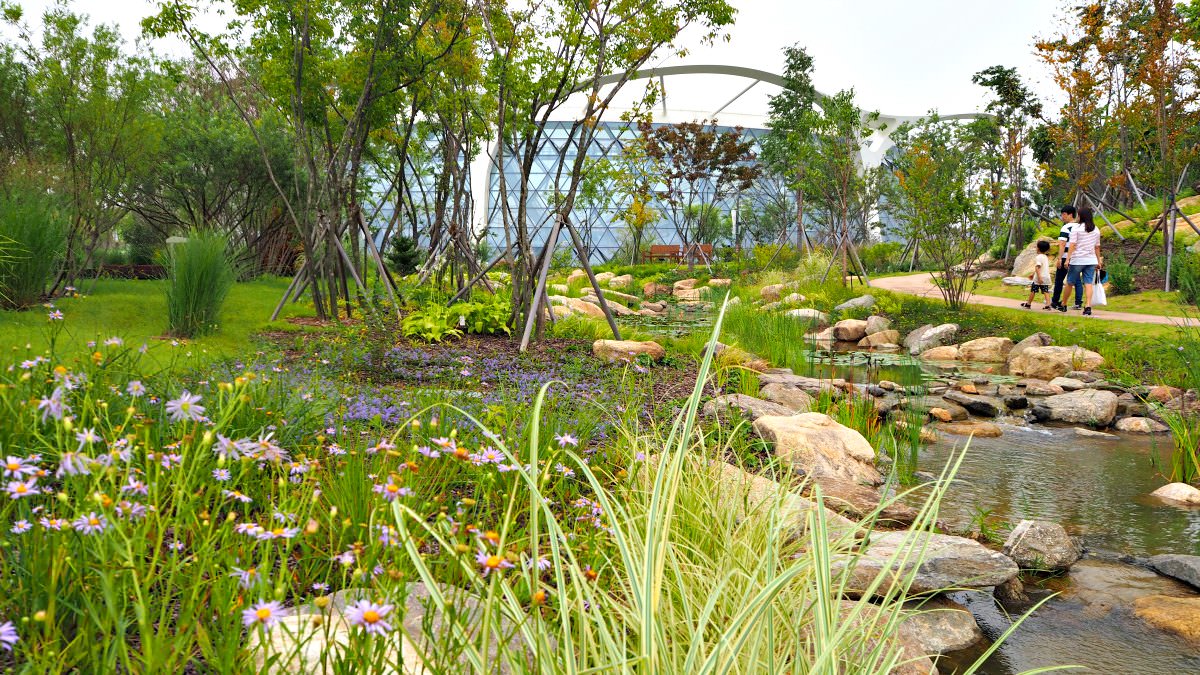 Rock Garden with a view of Seoul Botanic Park's greenhouse building
Rock Garden with a view of Seoul Botanic Park's greenhouse buildingThe Gardeners' Garden seems to create a space and garden for new trends with plants of various species that blend creating a harmonious beauty.
The Healing Garden is consists of medicinal plants that are from both the East and the West, which are being used for their healing effects.
 Seoul Botanic Gardens - Flowers and Botanical Building
Seoul Botanic Gardens - Flowers and Botanical BuildingThe Welcome Garden displays plants that represent the four seasons of Korea. (Could be challenging to maintain this garden!).
The Meditative Garden is where you should go to reflect on your life. As someone says: An unreflected life is not worth living for!
It has a beautifully-built 'Hanok' (traditional Korean house).
The Memory Garden displays representative plants that once abounded in the country but are now hard to find.
The Windy Garden is where you can observe the exotic sight of Saw Grass and purple Reed Grass.
In other words, there is so much to see at Seoul Botanic Park. So, stop reading this and just go!
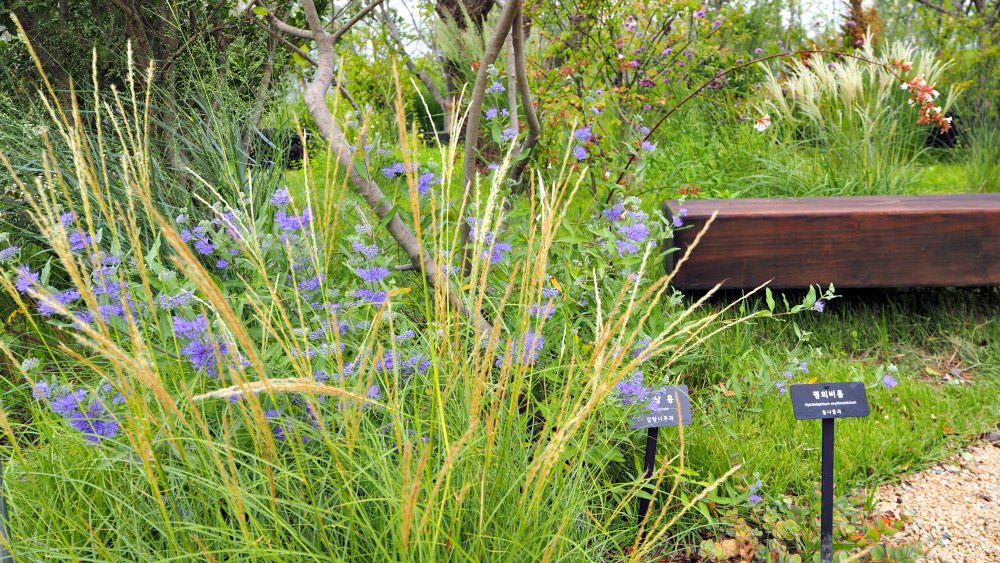 Purple Reed Grass
Purple Reed Grassbotanical park facilities
 Forest Education Center at Seoul Botanic Park
Forest Education Center at Seoul Botanic Park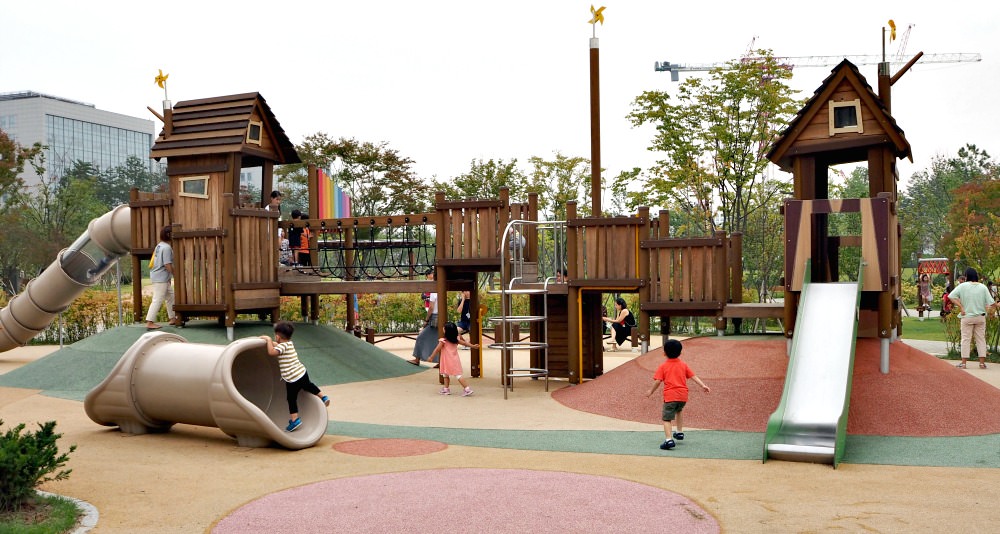 Children's playground
Children's playground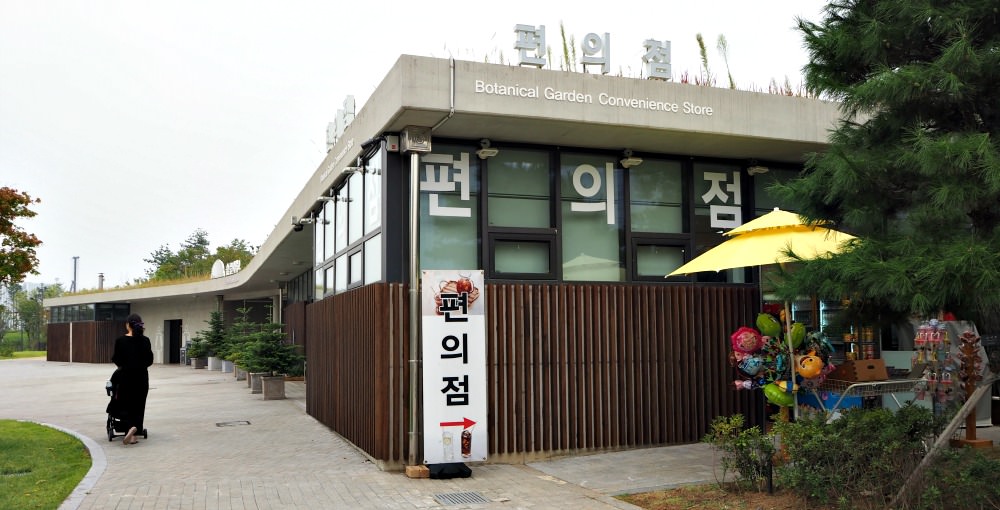 Convenience store at Seoul Botanical Garden
Convenience store at Seoul Botanical GardenSome Useful Information
Outside the Seoul Botanic Park (the greenhouse where the Tropical and Mediterranean Zones are located), you can find four major exploration fields.
These fields include Forest Field, Lake Garden, Wetland, and Botanic Garden.
Please, KNOW this! All other three fields are for FREE except the Botanic Garden (also closed on Mondays).
Prohibited Activities and Items
According to the pamphlet, the following are not permitted within Seoul Botanic Park...
Alcohol, burners, tents, shade canopies, sports equipment, bicycles, inline skates, kick scooters, electric toy cars, and other similar items.
At the Botanic Garden area, you are strictly prohibited from doing the following...
- collecting plants/soil/rocks, entering restricted areas, using camera tripods, eating and drinking, bringing a pet animal without a leash.
Additional Facilities (Baby Carrier, Wheelchair)
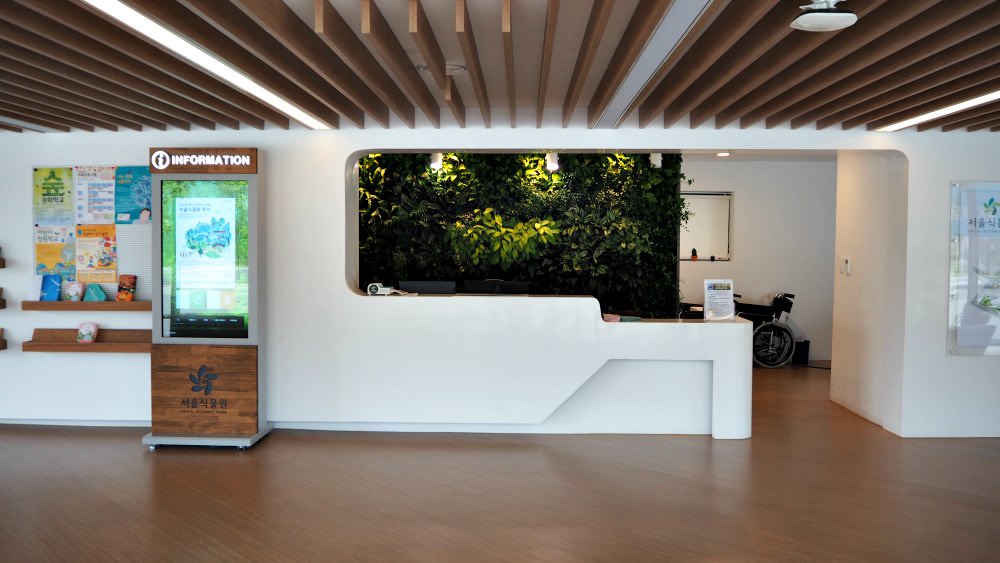 Visitor Center at the entrance area of the forest park area
Visitor Center at the entrance area of the forest park areaIf you are bringing with you babies or small kids, you may borrow a baby carriage from the Visitor Center or the Information Desk of the Botanic Center.
The Visitor Center is located close to Magoknaru Station (Exit 3) and the first building you will see belonging to the park.
If someone in your family needs a wheelchair, you may also borrow them from the places mentioned above.
For more exhaustive information, please see the guide and source here.
Getting to Seoul Botanic Park
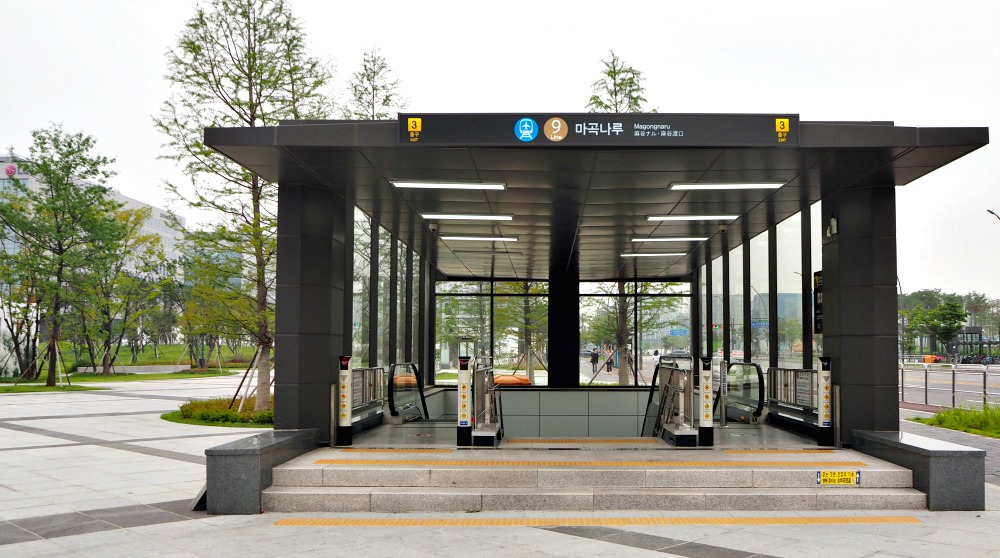 Magoknaru Station Exit 3
Magoknaru Station Exit 3You can check the directions on how to get there depending on your point of departure. I should say that it is practical to take the Subway.
Anyway, here are your possible transport choices...
By Subway
Subway Line 9 (AREX): Get off at Magoknaru Station and come out from Exits 3 or 4.
Seoul Subway Line 9: Get off at Yangcheon Hyanggyo Station and come out from Exit 8 and then walk for around 5 minutes to the park.
Seoul Subway Line 5: Get off at Magok Station and then out from Exit 2. It will take around 10 minutes on foot to reach the park.
It only takes 19 minutes from Seoul Station to Magoknaru Station via AREX.
Address: 161 Magok-dong, Gangseo-gu, Seoul
By Bus
Get off at Magoknaru Bus Stop. Buses: 6642, 6645, 6648.
Get off at Gyeomjae Jeongseon Art Museum Stop when you take one of these buses: 672, 6631, 6642, 6712.
Parking Area
Yes, there is a parking area at the Basement Level 2 of Seoul Botanic Center. However, since there is limited space, you are advised to take public transportation.
Thanks for reading this long article. I hope this serves its purpose. If it does, please share with your friends or family!
- Home
- Botanical Gardens In Korea
- Seoul Botanic Park
Get Exciting Activities
Book one of our exciting activities today to experience the thrill of a lifetime! Take advantage of this opportunity and secure your spot in advance.
Hotel Map Guide
Find your affordable, accessible, and comfortable hotel in Seoul at Agoda.Com. See the hotel map below...
Hotel Booking Guide
Find affordable and amazing hotels on Agoda.com using the search box below. Book now to enjoy great discounts and save!
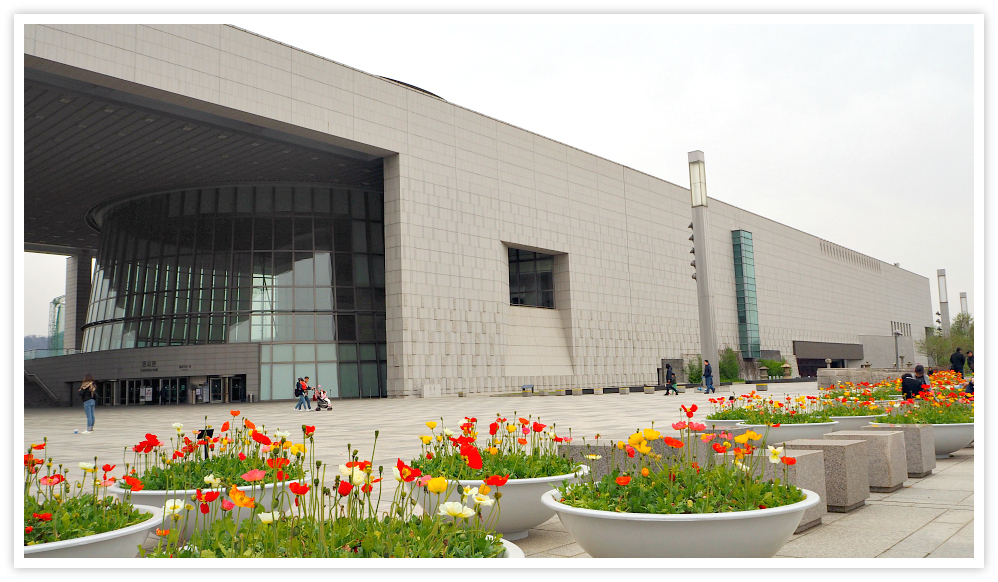
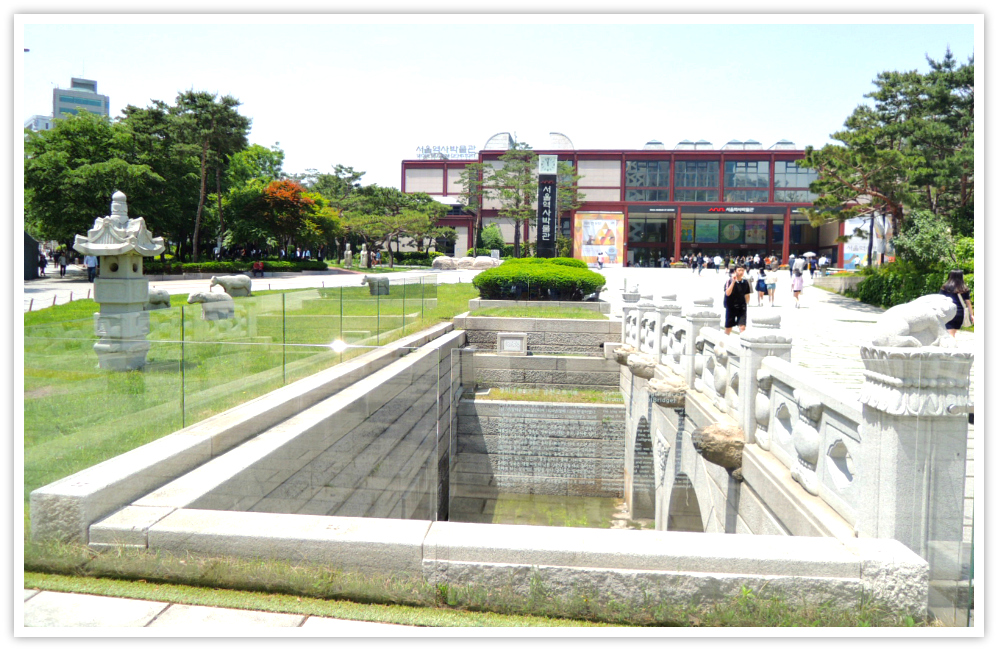
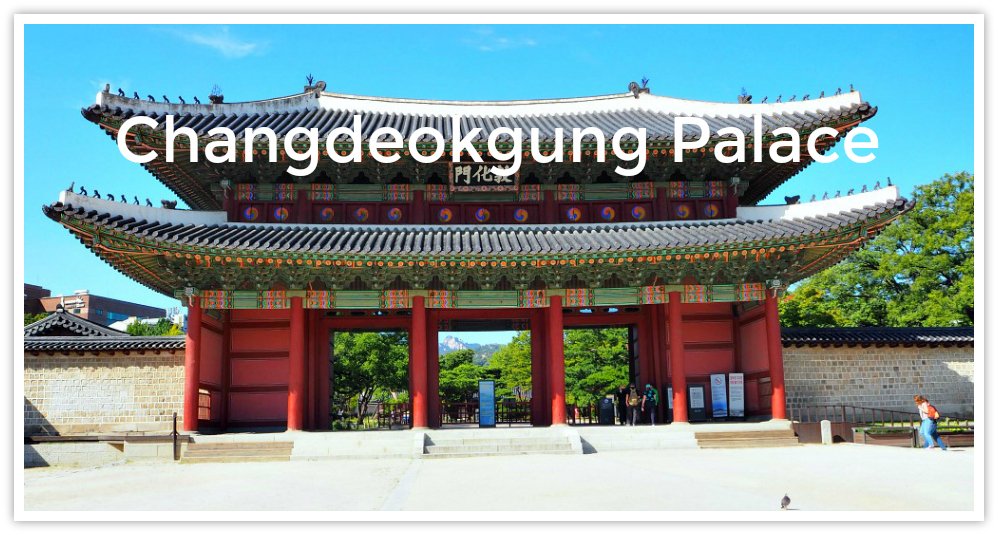




New! Comments
What do you think about this page? Leave me a comment in the box below.